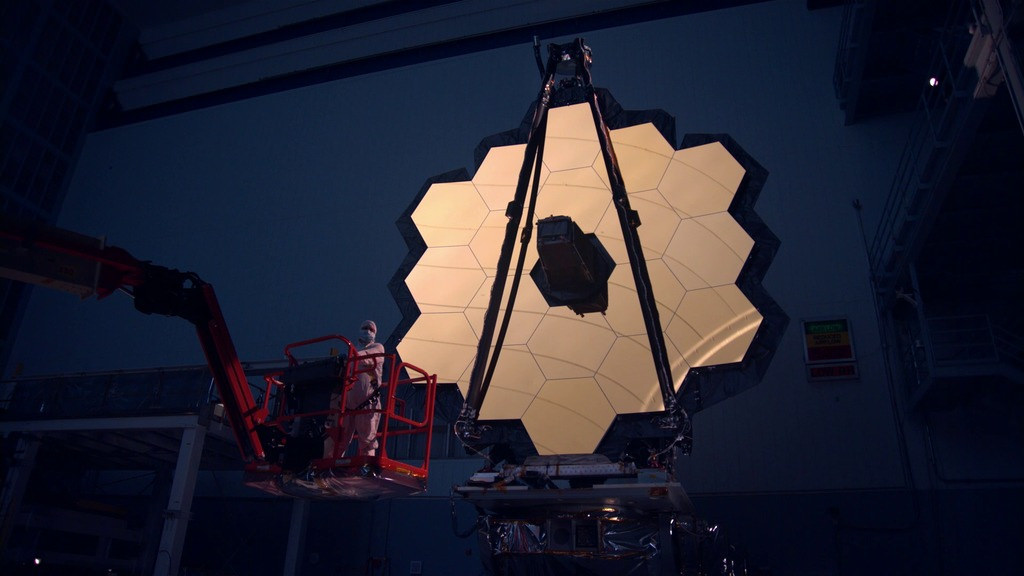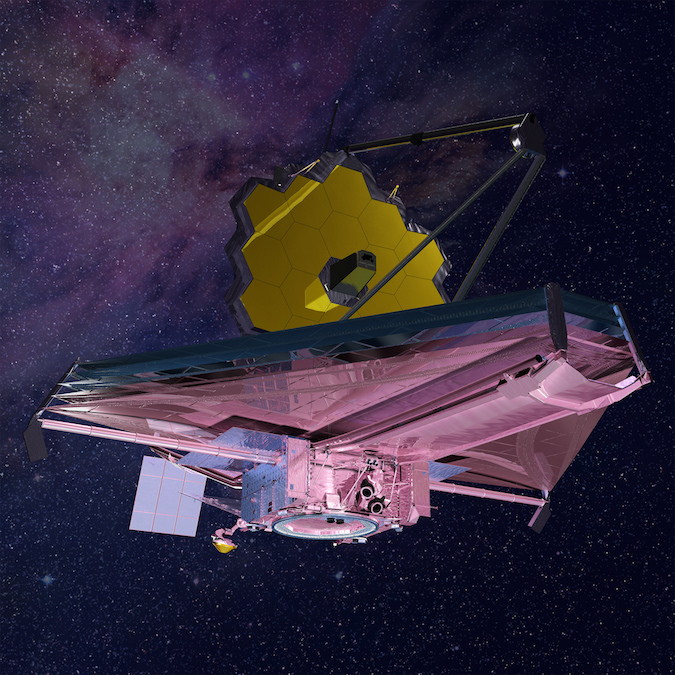Astronomy - Engineers examine unexpected readings from JWST shake test

NASA says engineers are diagnosing the source of “anomalous readings” during a recent vibration test of the sensitive optics and sensors at the heart of NASA’s James Webb Space Telescope.
In a status report posted to the JWST mission website, officials wrote that the anomalous accelerometer readings produced no visible signs of damage to the observatory, which engineers are stressing with a specially-crafted vibration rig to ensure it can survive the rigors of launch.
The test center is located at NASA’s Goddard Space Flight Center in Maryland, where technicians and engineers have spent the last several years putting together the telescope’s 18 gold-coated beryllium mirror segments and assembling JWST’s instrument bay.
“During the vibration testing on December 3 … accelerometers attached to the telescope detected anomalous readings during a particular test,” NASA said in a status update. “Further tests to identify the source of the anomaly are underway. The engineering team investigating the vibe anomaly has made numerous detailed visual inspections of the Webb telescope and has found no visible signs of damage.”
NASA said engineers are trying to pinpoint the cause of the unexpected measurements, but officials offered no further details about the nature of the issue in the online status report.
Engineers have also conducted a “low-level vibration of the hardware to measure its responses, and are comparing the results with data obtained prior to the anomaly,” NASA said.
The component of the observatory undergoing vibration testing is called the OTIS, which includes JWST’s optical mirrors and the science module containing the telescope’s four main instruments.
NASA plans to complete vibration and acoustic testing on the telescope at Goddard. Both types of tests will ensure the structures, detectors and mirrors can withstand the conditions of launch.

The telescope will then go to NASA’s Johnson Space Center in Houston next year for a thermal vacuum test, which will subject the core of JWST to the extreme temperature it will encounter in space.
From there, the observatory’s science section will travel to a Northrop Grumman facility in Redondo Beach, California, for attachment to the spacecraft bus and sunshield, which will supply power, communications, pointing and thermal control to the telescope.
JWST is an infrared successor to NASA’s famed Hubble Space Telescope, promising previously unseen views of the proto-universe, the earliest galaxies and stars after the Big Bang, and data about the conditions on potentially habitable worlds orbiting other stars.
Engineers planned to run deployment tests on the telescope’s foldable wings before and after the vibration and acoustic tests at Goddard to make sure the critical deployment mechanisms are undamaged.
Precision checks of the curvature of the mirror segments, each about the size of a coffee table, after the shake and sound tests will verify the telescope’s optics are still up to the job. Alignment checks are also planned.
The telescope is buttoned up in launch configuration for the testing at Goddard.
Once launched from French Guiana aboard a European Ariane 5 rocket in late 2018, the observatory will head off to the L2 Lagrange point nearly a million miles (1.5 million kilometres) from Earth.
A report by the Government Accountability Office earlier this month said NASA has about six months of schedule reserve to meet JWST’s target launch date in October 2018.
The mission is expected to cost NASA around $8.8 billion, but contributions from international partners in Canada and Europe, which is providing JWST’s Ariane 5 launcher, will push the project’s total cost upwards of $10 billion.
No comments:
Post a Comment